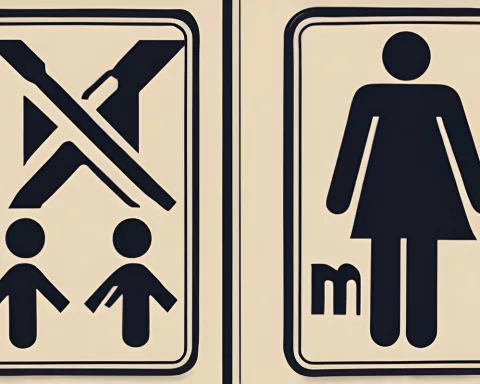Child mortality rates in Cape Town are increasing, with road traffic accidents as the second most common cause of death for children. The study identifies Nyanga in the Klipfontein sub-health district as having the highest rates of child injury deaths, due in part to poverty and deprivation. The research sheds light on the need for child-focused safety measures and collaborative efforts across different sectors to make Cape Town safer for children.
Child mortality rates in Cape Town have been on the rise over the past five years, with road traffic accidents being the second most common cause of child fatalities. The Klipfontein sub-health district, particularly the community of Nyanga, has seen the highest rates of child injury deaths, largely due to societal factors such as deprivation and poverty. The study highlights the urgent need for child-centric safety measures and collaborative efforts across various sectors to create a safer environment for children.
Unveiling the Hard Facts
A groundbreaking study conducted by Zulfah Albertyn-Blanchard, a PhD candidate at the University of Cape Town (UCT), unearths a troubling trend in child mortality within Cape Town. Her research, titled ‘The spatial distribution of injury burden of children in the western geographic service area, City of Cape Town (2011–2015),’ sheds light on the grim reality of child mortality rates within the city over five years. Notably, it’s the first research of its kind in South Africa that employs a spatial conceptual framework to delve into the issue of childhood injury mortality.
A stark revelation brought forth by the research is that road traffic accidents stand as the second most common cause of child fatalities within the city-region. Tragically, more than half of these casualties are unintentional. The research, therefore, paints a distressing picture of the city’s child mortality landscape and highlights the need for immediate intervention.
The Burden of Child Injury Deaths
Closer examination of the data reveals the Klipfontein sub-health district, specifically the community of Nyanga, as the epicenter of child injury deaths. The most concerning aspect here is the surge in homicides, particularly resulting from sharp-force injuries like stabbings. This disturbing trend overshadows all other forms of injury-induced deaths among children, particularly in adolescent males aged between 15 to 17 years.
The research’s spatial conceptual framework enables a thorough analysis of the disparity in injury deaths based on age and gender. Furthermore, it exposes the fact that most transport-related casualties occur during daylight hours, affecting all age groups. This insight underlines the urgent need for stringent safety measures during daytime hours across the city-region.
Social Issues & Child Mortality
However, Albertyn-Blanchard’s study doesn’t just present statistics. Her comprehensive analysis shines a light on societal factors contributing to these alarming figures. Nyanga’s high child injury death rate is not an isolated issue but is closely linked with the area’s extreme deprivation, poverty, and structural inequalities. These collective factors result in escalated violence and safety concerns within the community.
The data drawn from Salt River Medico-legal Mortuary and Childsafe offers an in-depth analysis of the injury profile and mortality of children aged 17 and under. The study further utilizes spatial analysis to evaluate the socio-economic and geographical variables contributing to transport-related injury mortality. This exhaustive analysis underscores the urgent need for an all-encompassing national injury surveillance system integrated with routine health information systems.
Call for Change
Albertyn-Blanchard asserts the necessity of strengthening the monitoring of child injury burden in South Africa. She calls for a consolidated effort across various sectors, including health, urban planning, transport, and education, to devise child-centric safety measures and collaboratively create a safer environment for children.
Her research receives accolades from her supervisor, Professor Shanaaz Mathews, a prominent figure in children’s rights. Mathews appreciates the study’s focus on child-centered analysis of injury mortality data and emphasizes the critical need for early intervention to prevent these avoidable deaths.
As Albertyn-Blanchard gears up for her graduation on 14 December with a PhD in paediatrics, she shares her insights from her research journey. She highlights the crucial importance of viewing the world through a child-rights lens. This perspective could catalyze significant shifts in policy, planning, and intervention strategies, not only in Cape Town but also in nations facing similar issues. Albertyn-Blanchard’s study, therefore, serves as a wake-up call for change and a call for a safer world for our children.
1. What is the trend in child mortality rates in Cape Town?
Child mortality rates in Cape Town have been on the rise over the past five years, particularly due to road traffic accidents, which are the second most common cause of child fatalities.
2. What is the highest rate of child injury deaths in Cape Town?
The community of Nyanga in the Klipfontein sub-health district has the highest rates of child injury deaths, largely due to societal factors such as deprivation and poverty.
3. What is the main cause of child fatalities in Cape Town?
Road traffic accidents are the second most common cause of child fatalities in Cape Town.
4. What societal factors contribute to child injury deaths in Nyanga?
Nyanga’s high child injury death rate is closely linked with the area’s extreme deprivation, poverty, and structural inequalities. These collective factors result in escalated violence and safety concerns within the community.
5. What collaborative effort is needed to make Cape Town safer for children?
Collaborative efforts across various sectors, including health, urban planning, transport, and education, are needed to devise child-centric safety measures and create a safer environment for children.
6. What is the significance of Albertyn-Blanchard’s research?
Albertyn-Blanchard’s research sheds light on the grim reality of child mortality rates in Cape Town and highlights the urgent need for child-centric safety measures and collaborative efforts across various sectors to create a safer environment for children. It also emphasizes the need for early intervention to prevent avoidable deaths.












